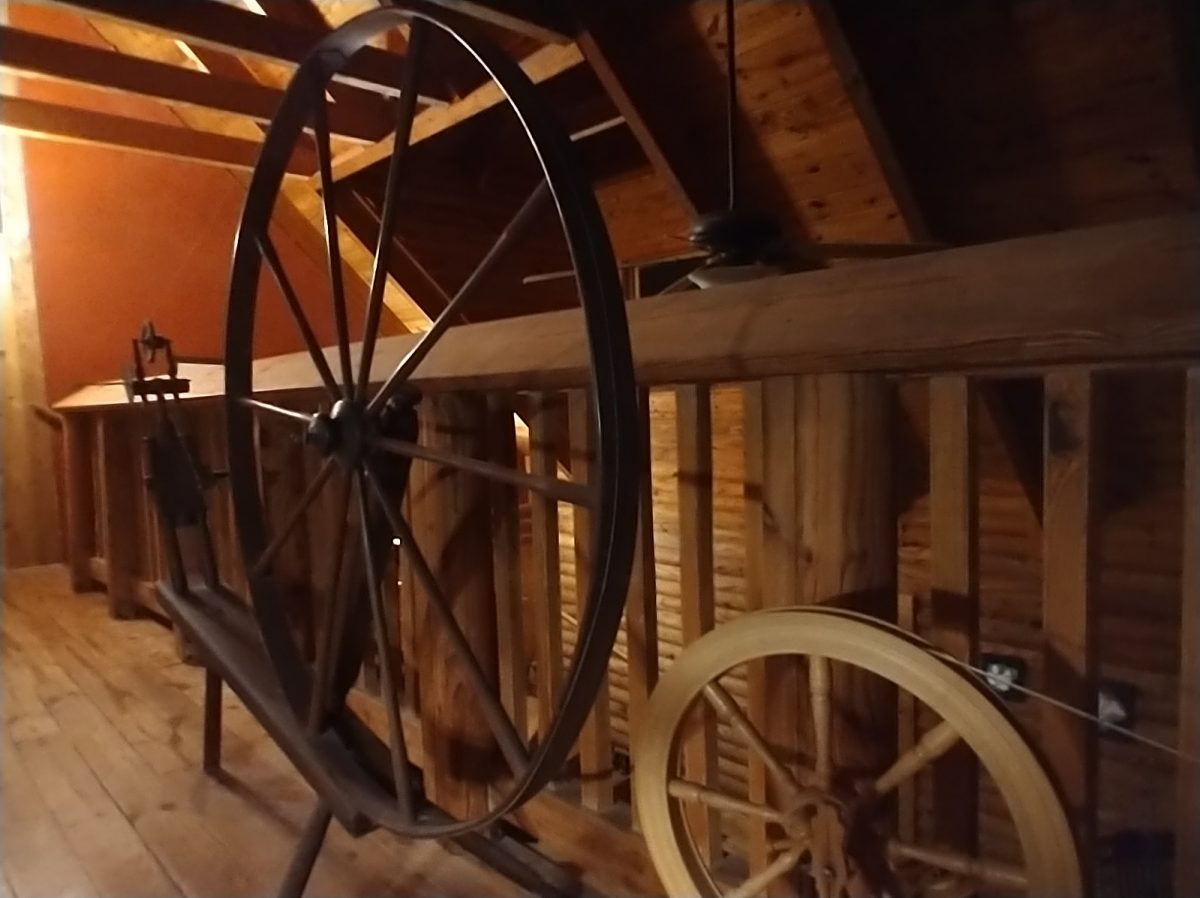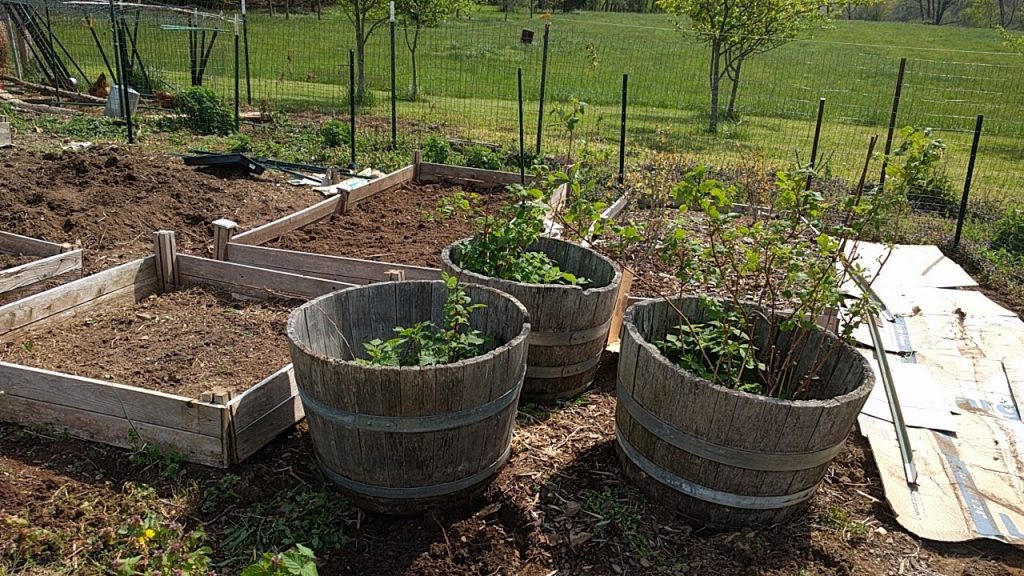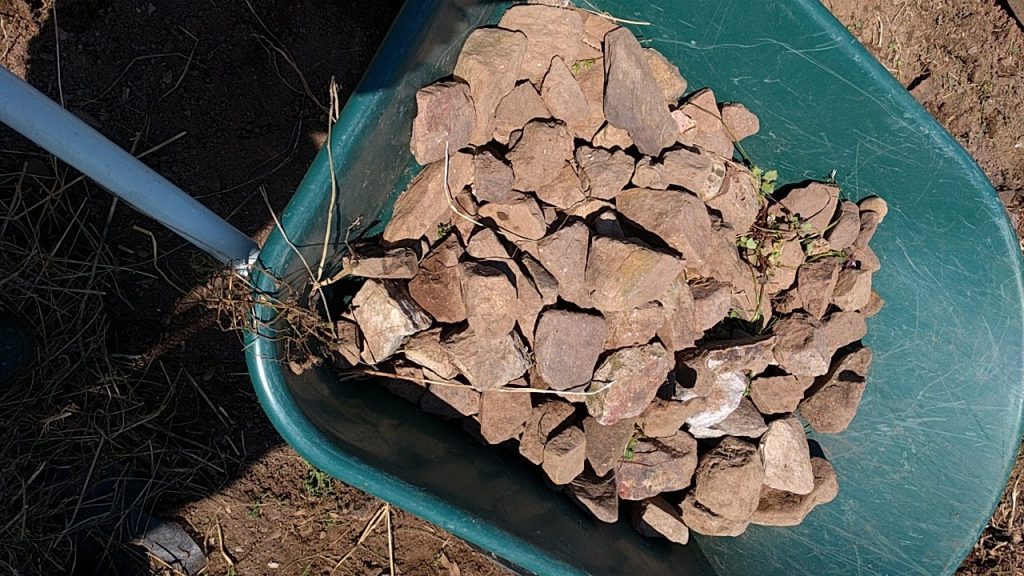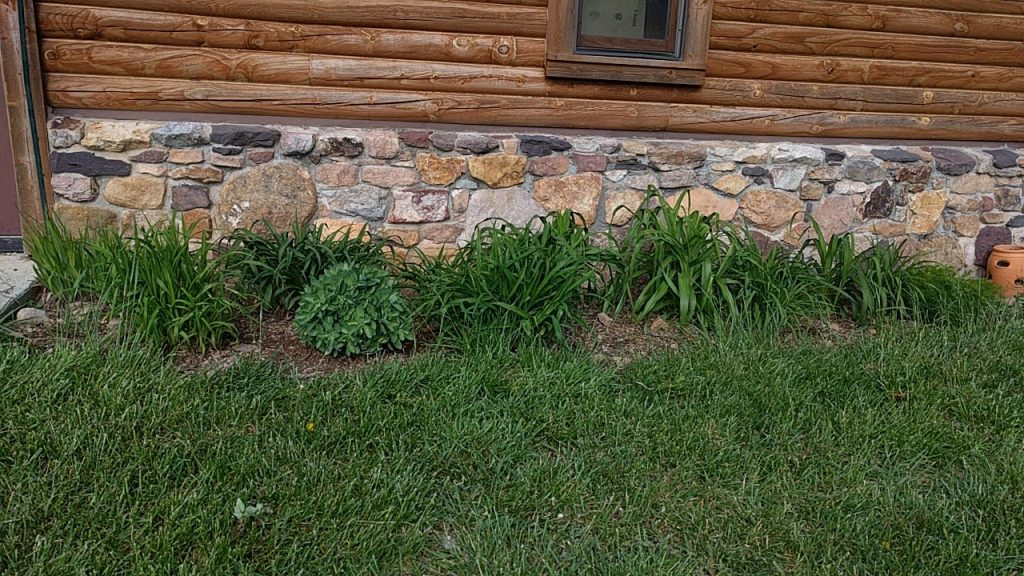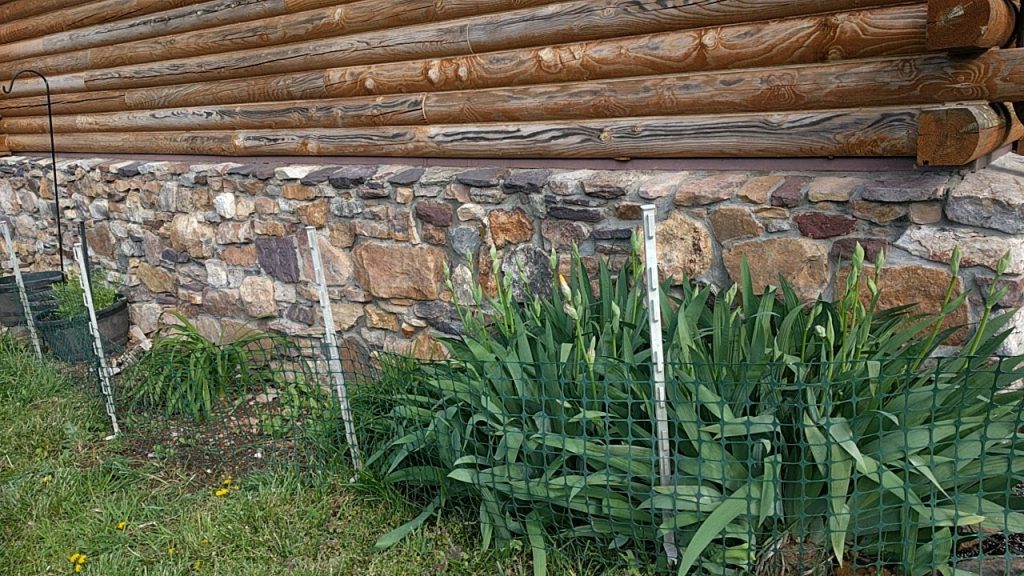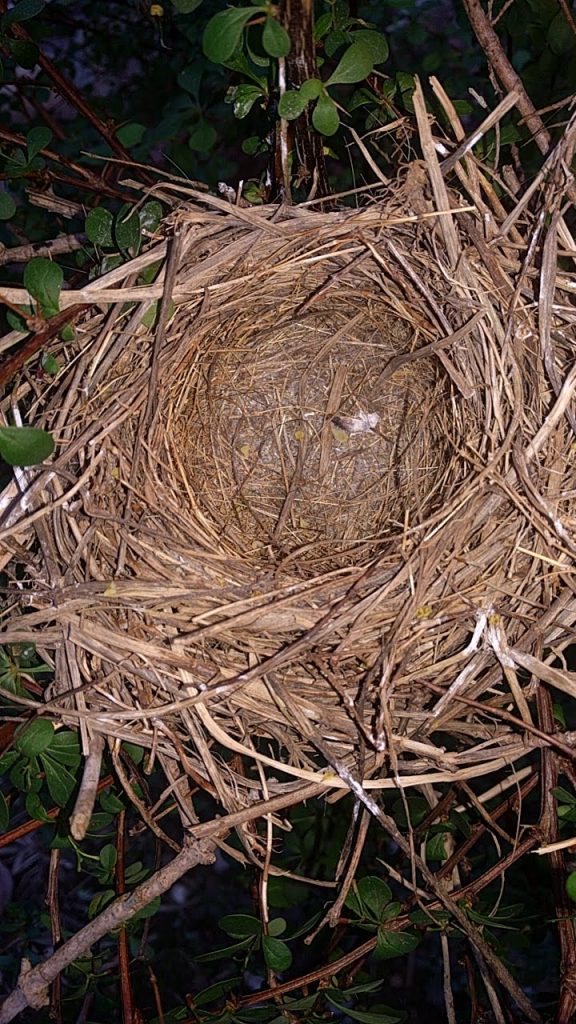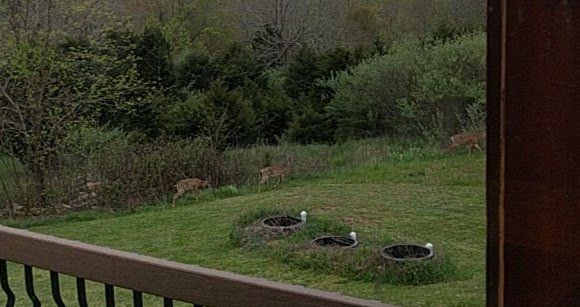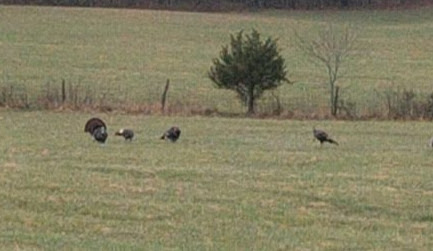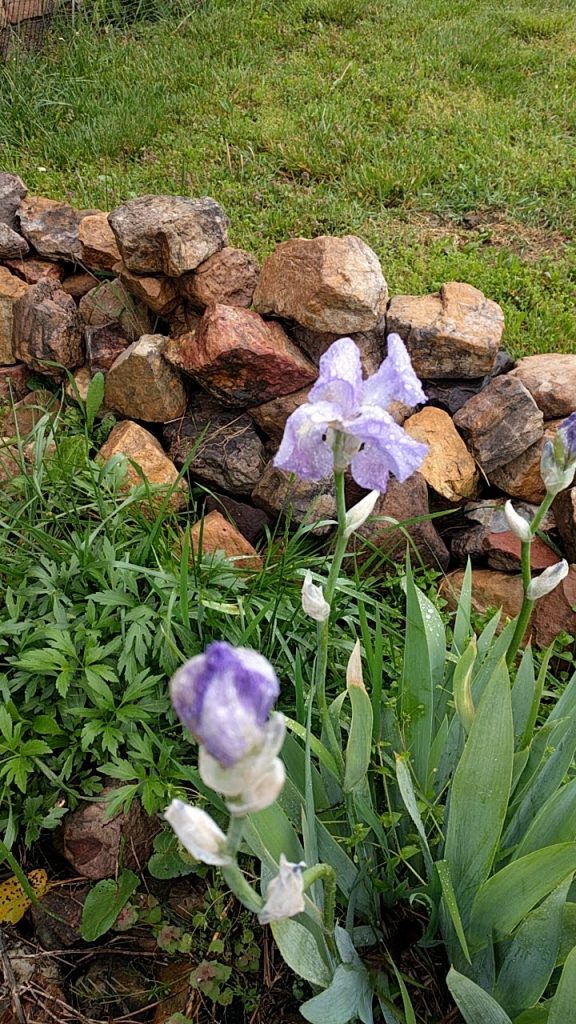Yesterday and today have been great days for the garden. Yesterday I took the scuffle hoe to the boxes to knock down the weeds beginning to sprout in them and I used the garden fork to clear the back aisle of weeds thinking I would plant the potatoes there. Then I moved back up to the area where the mint was and using the fork, dug everywhere a sprout of mint had emerged. I got a wheel barrow full of roots and sprouts, but I am winning.
This morning first thing, I took the cut potato pieces out and it took me about two heartbeats to realize that the area I cleared yesterday was much too rocky and compacted for potatoes. The 4 X 8 foot bed that had the failed wren nest in it was the next option. It turned up nicely and is adjacent to the area the mint was, so there is lots of good soil beside it that I can use to make the mounds as the potatoes sprout, so they were planted. The garlic, onions, and asparagus were weeded and a couple dozen dandelions dug. After lunch, I was determined to get the rest of the garden ready to plant and to move the “gate” opening down to the wood post so I can hang a real gate on it. That meant moving a T post and I remembered that I had loaned the T post pounder to my daughter. Instead of pounding in the post, I dug it in as it doesn’t carry a load. The aisle below my comfrey plants was extended down all the way to the south fence line. Two wheelbarrow loads of weeds were dug out of the area that will be the three sisters garden and the weeds dumped in the chicken run for them to scratch into compost. I got weed mat down on the south and west edges of the garden, but I ran out of energy before I got all the spoiled hay down. There is a wheelbarrow load of small rocks that need to be relocated, but the hay will have to be another day.
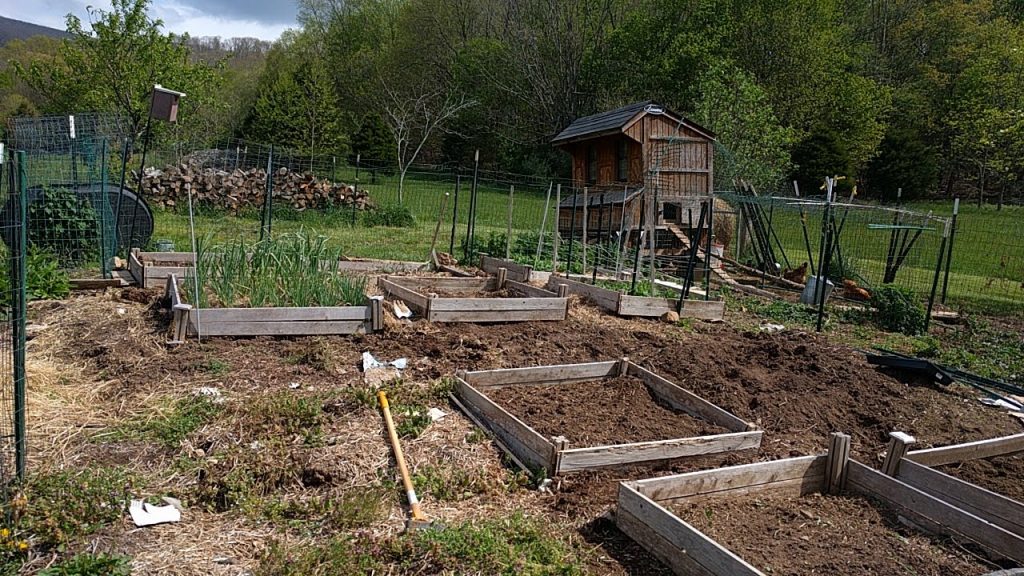
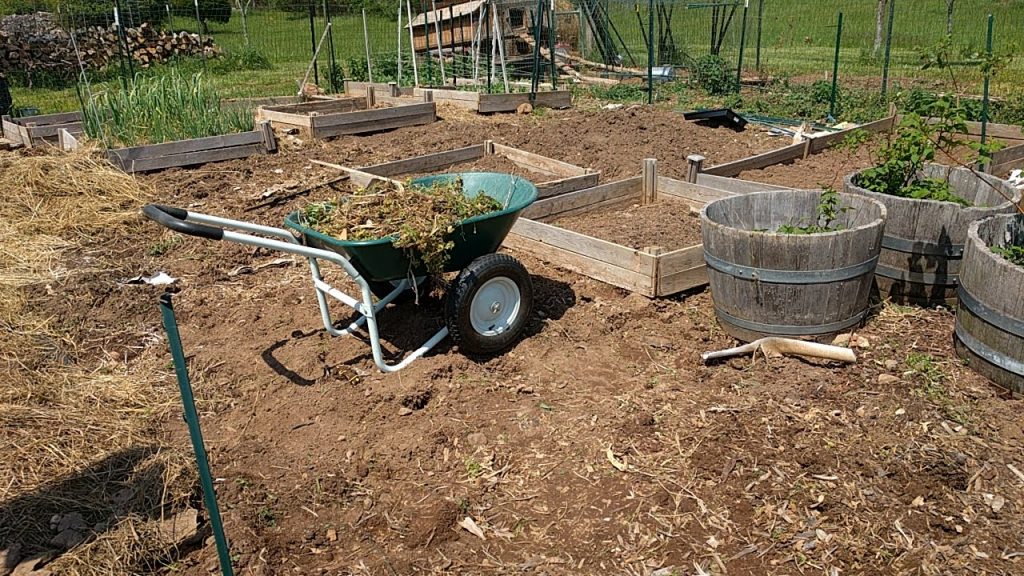
There is a bit of fence moving to be done this week, but I need to get the post pounder back. The spoiled hay needs to be put down on the cardboard and weed mat. And I need to wait out a few chilly nights this week, but next weekend may be planting time for the garden. I still need to clean up the edges some, but I feel good about what was accomplished this weekend. During the war, folks were encouraged to grow Victory gardens. This year, my expanded efforts will be a “Pandemic” garden.
